
STEM for Middle Schoolers: A Guide for Teaching STEM at Middle School
Read stories how our founder Albert turned his childhood passion into CircuitMess, and get exciting DIY project ideas you can do with your kids at home for free.
Table of content
With STEM education becoming increasingly prominent, it's vital to understand the theory behind it so that you can effectively implement the best practices in your classroom.
In this article, we'll show you both: the core principles of successful STEM education for middle school students, along with practical tips for integrating these concepts. So, let's see how you can teach students about scientific concepts through STEM hands-on learning!
Understanding STEM Education
Mathematical concepts and formulas? Check. Engineering projects? Check. Circuit diagrams? Check.
These are all important elements covered in middle school STEM programs. However, understanding STEM education goes beyond mastering individual subjects.
The ultimate goal is to connect these disciplines to inspire kids to innovate, help them solve complex problems, and prepare students for future success. After all, STEM occupations are on the rise, making it more important than ever to start preparing students early.

For middle school students, STEM classes are the pivotal places that prepare these younger students for their academic and career-oriented future, and you as an educator play a crucial role in this journey.
In other words, if you engage your middle school students in fun STEM activities today, you'll help them develop into well-rounded critical thinkers tomorrow.
Throw in some problem-solving skills development, overlapping STEM disciplines, and creative thinking strategies, and you'll get not only skilled workers, but also innovators.
Developing a STEM Identity in Middle Schoolers
Of course, younger kids like elementary students and middle schoolers don't like being forced to conduct experiments, or do any learning activity for that matter.
You can transform this resistance by fostering a STEM identity in middle schoolers, where they start to see themselves as capable and enthusiastic participants who complete assignments with joy.
Building internal motivation in this way not only makes learning more enjoyable for them but also makes the educator's task easier. When students are self-driven by curiosity and discovery, teaching becomes less about pushing information and more about guiding exploration.
We'll now see how you can help your middle school students find scientists within themselves.
Tips for fostering a positive STEM identity
Fostering a STEM identity isn't a one-size-fits-all endeavor. You have to consider the diversity of your students, as they most likely come from different backgrounds and have their own unique experiences and perspectives.
For instance, here's an overview of identity constructs of middle school girls of color, according to Kang et al.

As you can see, factors like parents having science-related jobs and out of school participation in STEM activities influence how students form their STEM identities.
That's why it's vital to create inclusive and supportive learning environments that acknowledge and value the diverse experiences students bring to the classroom. You can do that by following these tips:
- Emphasize diversity:Highlight the contributions from scientists of all walks of life to show students that STEM welcomes everyone.
- Celebrate effort:Acknowledge students not only for their accomplishments but also for their efforts, problem-solving skills, and creativity. STEM is aboutexperimentation and discovery, so valuing the process is essential.
- Keep it stereotype-free:Stay alert to avoid any hints ofstereotypesand make sure every student knows they belong and can excel in STEM.
Role models and mentorship in STEM
Exposing students to diverse role models in STEM fields and facilitating mentorship opportunities can highly impact their STEM identity.
A good idea here is to talk about inventors and scientists who overcame obstacles on their path to success.
Sharing stories about financial challenges, cultural barriers, or lack of access to resources, can be incredibly inspiring. It shows students that resilience and determination are key components of success in STEM.
For instance, Katherine Johnson faced segregation and discrimination, and yet she managed to make groundbreaking contributions to NASA's space program, remaining an inspiring role model for budding scientists.

Now, don't forget to include yourself as a role model and a mentor!
Remember that your daily interactions, advice, and expertise play a significant role in shaping your students' perspectives on STEM, so be sure you're present and actively engaged in your middle schoolers' scientific explorations.
Engaging Middle School STEM Activities
By now, you're probably excited to challenge students to explore chemical reactions, math concepts, and more through fun STEM activities.
But before we dive into STEM projects, let's first establish some criteria to ensure that the activities you select are both engaging and educational.
Criteria for selecting STEM activities
Seeing as middle school STEM programs should be engaging, interesting, and educational at the same time, we suggest that the STEM projects you choose meet the following criteria:
- Real-world applications:Select the activities that connect with real-world problems and scenarios, allowing students to see the relevance of their work beyond the classroom.
- Engineering design process:Activities should integrate the engineering design process, which means encouraging students toidentify problems, brainstorm solutions, design prototypes, and test their outcomes.
- Collaboration skills:When possible, find activities that encourage teamwork and communication.
- Embracing failure:There should be room for trial and error, teaching students that failure is a valuable part of the learning process.
To help you out, we've gathered the best STEM projects that tick all these boxes. Let's see what they are.
Hands-on projects to spark interest and learning
We'll start with some classics that are great for introducing students to the world of scientific principles and fostering creativity.
#1 Egg drop engineering
This fun STEM challenge lets middle schoolers explore their engineering skills, as they use various materials to protect an egg from a high fall.
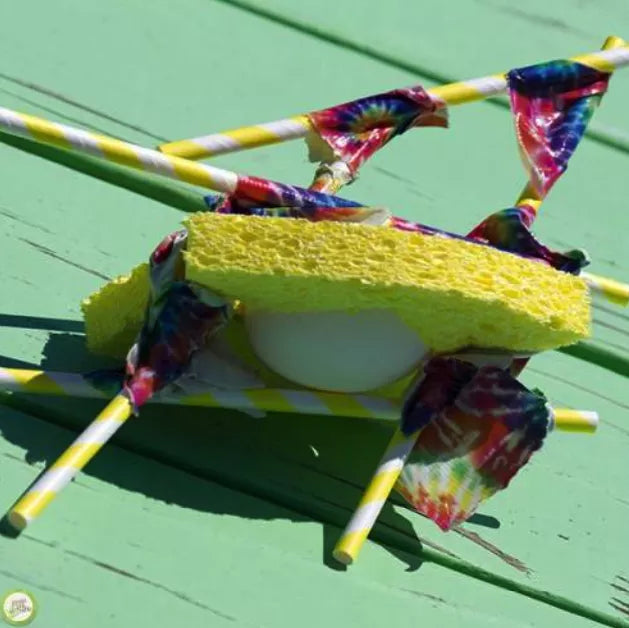
#2 Bridge building contest
STEM challenges like bridge-building contests help students learn the basics of structural engineering and physics in a fun way.
If you turn this STEM activity into a contest, you can also teach students about the value of teamwork and strategic thinking, keeping the students engaged.
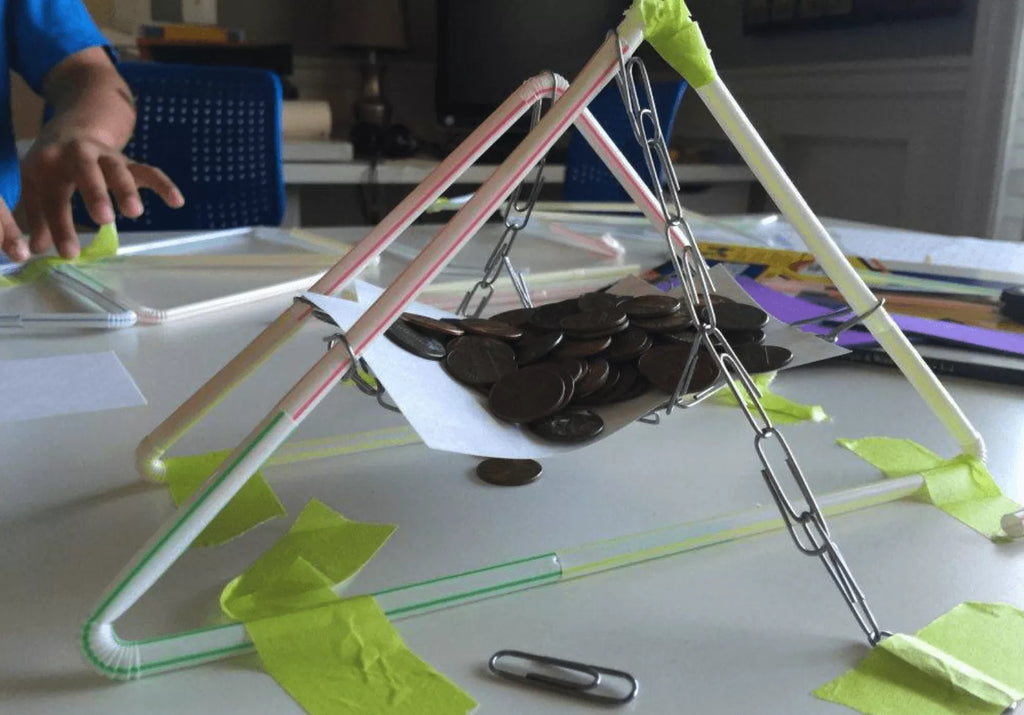
#3 Coding a story or game (with Scratch)
Scratch, a block-based programming language, is a great way to introduce students to coding.
Even middle schoolers with no previous programming experience can code stories, animations, and simple games, which is great for developing critical thinking skills and an understanding of logical sequencing and computational thinking.
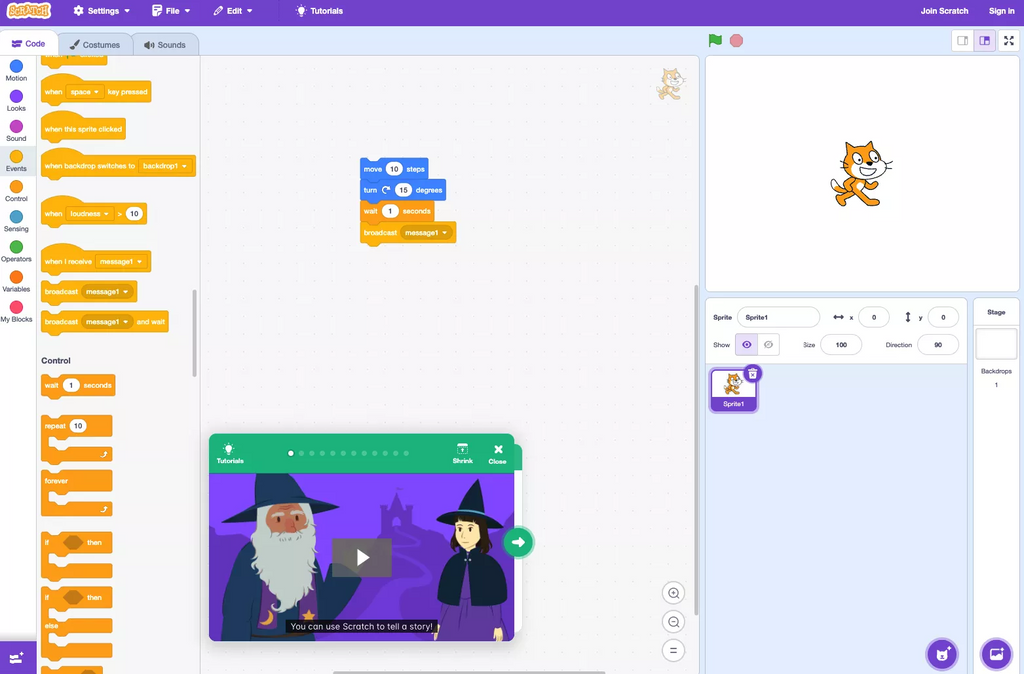
Innovative STEM Project Ideas
If you're looking to take STEM learning up a notch, you'll also want to consider fresh, innovative STEM projects for middle school students. Here's a list of four fun STEM activities that will help you teach kids about electronics, programming, robotics, problem solving, and critical thinking.
#1 Wearable technology (Clockstar)
There's no better way to get kids interested in wearable technology than letting them create and program devices they will actually wear and use daily.
Assembling Clockstar is one such STEM activity in which kids create their own DIY smartwatch.
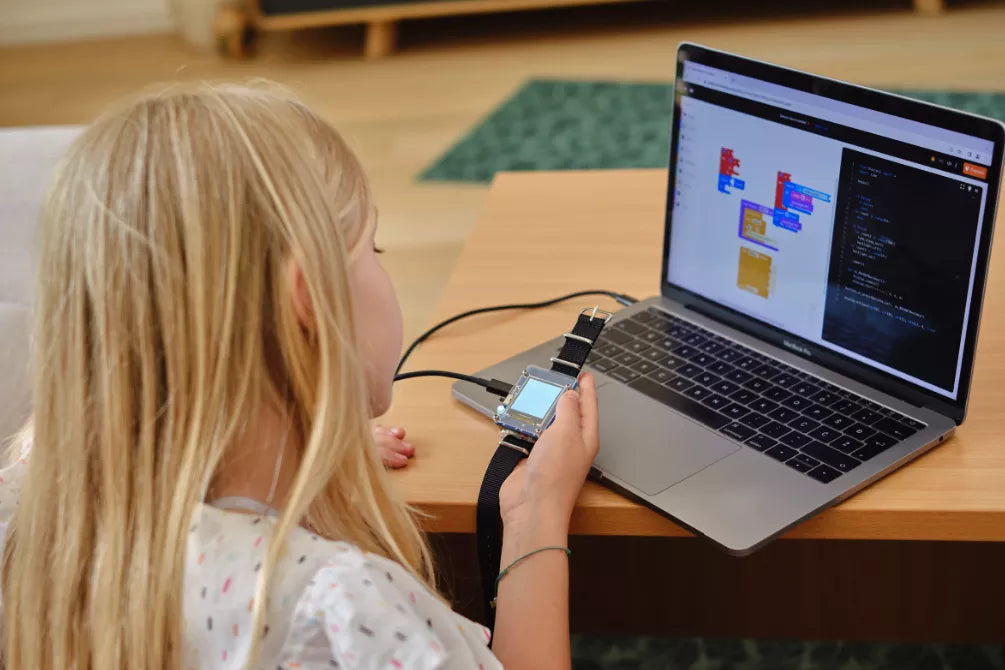
#2 DIY gaming console (Nibble)
If your middle school students enjoy playing games on their phones, they'll absolutely love getting to assemble and code their own game consoles. With Nibble, a DIY game console, they can learn the basics of programming and customize their gaming experience.
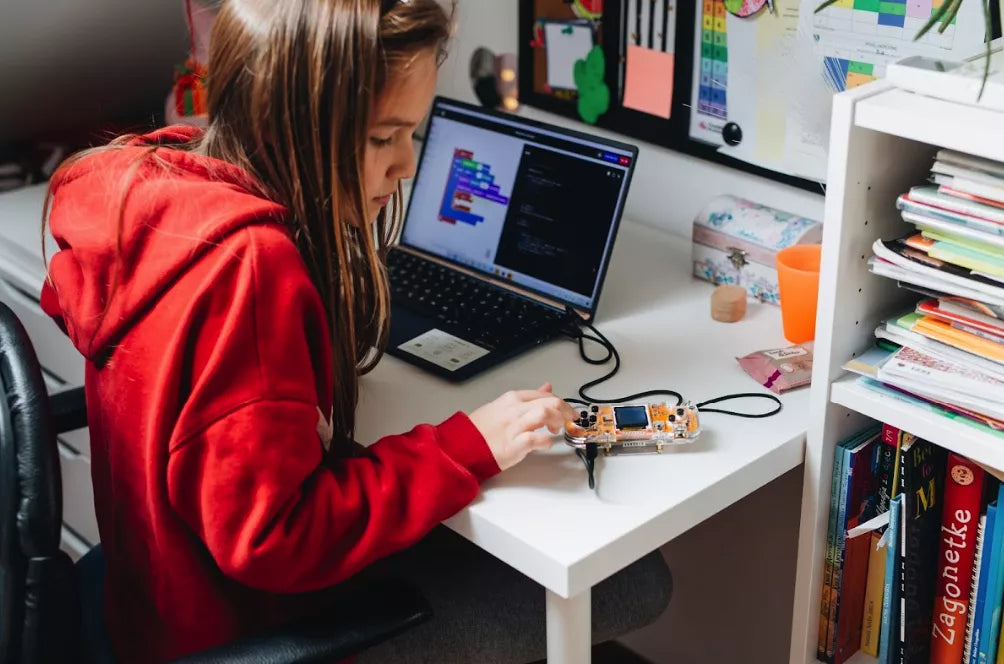
#3 Robotics challenge (Armstrong)
Next on our list is another engaging engineering activity that consists of assembling a real, functional robotic arm. Armstrong is a DIY robotic arm that you can build, code, and then use to perform various tasks.

#4 DIY music machine (Synthia)
For those who want to combine STEM projects and music, Synthia is the perfect option. You can also use this DIY sampler as a drum machine, sequencer, and synthesizer. In other words, you can create unique beats, all while learning about software and hardware.
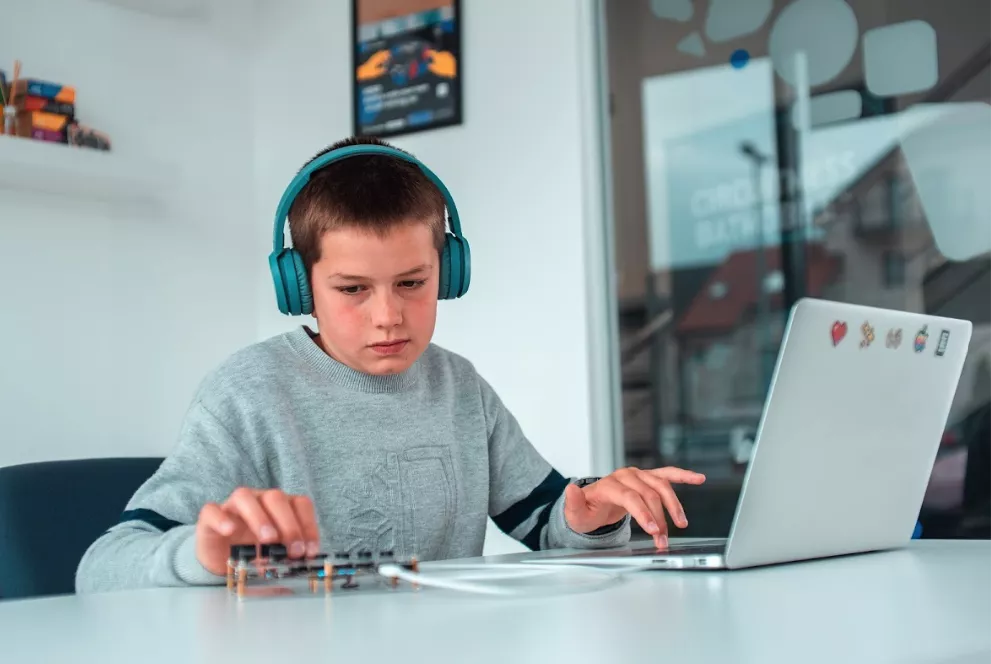
Resources and Tools for STEM Educators
Alright, now you have ideas for both classic and innovative middle school STEM projects. As STEM activities usually involve more than baking soda and paper towel rolls, the next step is to explore resources and tools that will support your program.
Online platforms and communities for STEM educators
Chances are that you're not the only educator in your area trying to bring STEM projects to your middle school students.
That's why you should connect with peers and exchange ideas, which you can do on online platforms and communities such as Edutopia and National Science Teaching Association. Even local Facebook groups are worth checking out!
Grants and funding opportunities for STEM projects
It goes without saying that it's hard to implement quality middle school STEM projects without financial support. If you want to learn more about navigating grants and funding opportunities, check out our post about getting STEM programs funded.
For now, here's a quick overview of common funding opportunities:
- State funding
- Federal grants
- Corporations
- Foundations and non-profit organizations
Overcoming challenges in teaching STEM to middle school students
Unfortunately, teaching middle school students is not all fun and games. There are often challenges like resource limitations, lack of training opportunities, and difficulties in recruiting specialized STEM educators, as research on challenges in STEM learning finds.

Addressing such challenges is often beyond the control of educators. However, there are challenges that educators themselves can address, and these are the challenges dealing with student engagement and motivation.
We'll now see some tips for keeping the students engaged, even those who may at first be reluctant to participate in STEM activities.
Tips for engaging reluctant learners
Remember, STEM skills can't develop on their own; they require active participation and a genuine interest from students. Here's how you can plant seeds of curiosity:
- Vary topics and interests:Incorporate a wide range of subjects and themes in your STEM curriculum to encourage creativity and cater to the diverse interests of middle school students.
- Create real-life scenarios:Choose STEM projects that mimic real life so that middle school kids see the practical applications of their learning and understand the relevance of STEM in everyday life.
- Use gamification:Implement game-based learning principles in your teaching approach to make complex STEM concepts more accessible and enjoyable for students.
- Implement interactive technology tools:Use digital simulations, coding platforms, and virtual labs to create a hands-on learning environment.
Effective methods for assessing student progress in STEM
Once your middle school kids actually start learning, it's vital to conduct assessments so that you can check their grasp of the subject matter and identify areas that need further development.
One effective method of assessment is self-assessment, which encourages students to reflect on their learning experiences, evaluate their understanding, and identify their strengths and weaknesses.
Assessment in STEM is a bit particular because it involves not just recalling information, but also applying it creatively to solve problems. In case you're not sure how to approach self-assessment in STEM, you can use the following rubric that guides students through assessing their performance across key areas like following instructions, effort, and problem-solving.
Other methods include formative assessments, such as in-class activities or group discussions, which serve as checkpoints to estimate the students' understanding.
Summative assessments, on the other hand, are often carried out as final projects or exams. They synthesize and evaluate what students have learned and how well they can use that knowledge.
Feedback mechanisms for continuous improvement
Instead of waiting after a unit is finished, you can also check on the progress the students are making along the way.
Quick, informal feedback sessions will help you get real-time updates on where your students stand and see if they need any help to achieve the educational goals you've set.
By providing continuous feedback throughout a project or unit, you can address any misunderstandings or challenges early on, ensuring that students stay on track. That's also an opportunity to adjust your teaching strategies to ensure they're matching your students' current needs.
How to start a STEM program in middle school
Now that you know the why and the how, all that's left for you is to start a program that incorporates STEM activities for middle school students.
Of course, the program itself depends on the subject you're teaching, but there are common elements to successful education applicable to all STEM areas. We've already mentioned some, so here's a handy recap.
Create a supportive environment for STEM learning
To start a STEM program in middle school, begin by creating a supportive learning environment that nurtures curiosity, where students are encouraged to try as many times as it takes to understand something. The supportive environment should teach students that every failure is a stepping stone to success.
Encourage collaboration among students
Next, you should emphasize teamwork by encouraging collaboration among students. When students work together, they combine their diverse strengths, which leads to more innovative solutions.
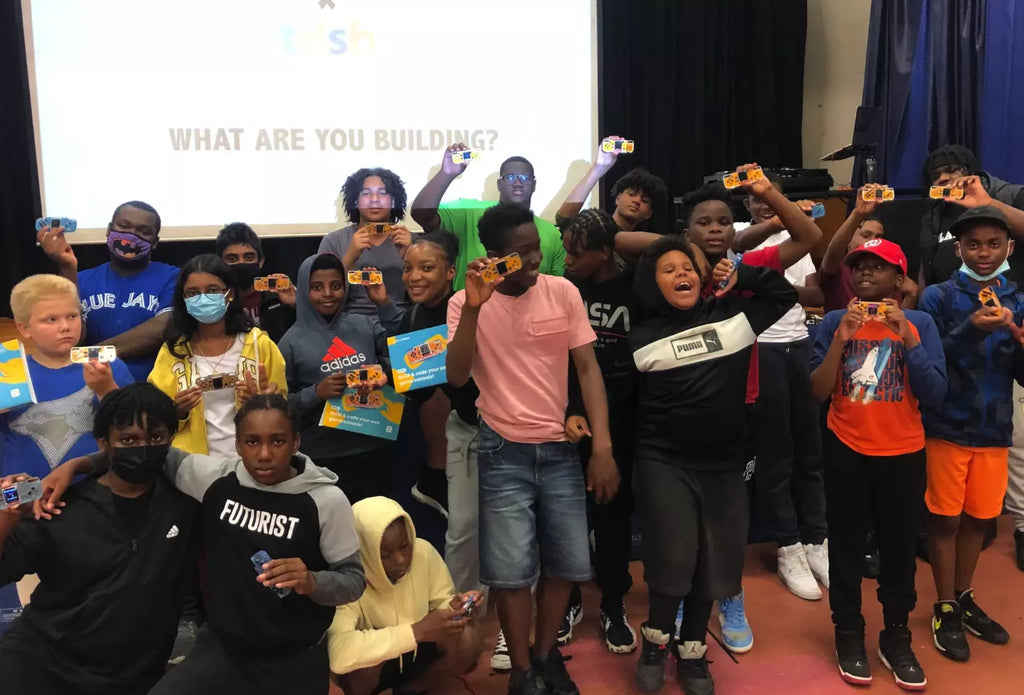
This also prepares them for the real-world dynamics of jobs in STEM industries, which brings us to our last pro tip.
Connecting STEM education to real-world applications
It's crucial to bridge the gap between theory and practice by connecting STEM education to real-world applications. For instance, exploring how electronics or math concepts are used in creating smart devices will help students see the tangible impact of their learning, making the subject matter more relevant to their everyday lives.
Preparing for the future
As a result of your (and your students!) efforts, your classes consist of more than formulas they'll forget over the summer.
Rather than that, you're equipping young minds with the skills and knowledge needed for succeeding in our rapidly evolving world, whether they choose careers in STEM or not.
The role of STEM education in career readiness
STEM education is crucial for getting kids ready for their future careers. Younger learners in middle schools and older kids alike benefit from STEM education, as they get to develop their critical thinking and technological literacy, which are essential in today's job market.
STEM projects are also a fun way to open the students' eyes to all sorts of career possibilities, from engineering to saving the planet with environmental science.
As an educator, you're a guide in their journey, so it's amazing that you're looking for ways to enhance the education of future scientists and engineers!
Teach your middle schoolers with CircuitMess
All in all, STEM projects can do wonders for middle school students and their education, especially if they're carried out through comprehensive, well-planned programs.
If you're looking to bring such an enriching experience into your school, and if you happen to be teaching classes about technology, robotics, or programming, we invite you to take a look at our CircuitMess Educators Program.
CircuitMess DIY STEM kits have already found their way into classrooms worldwide, sparking creativity and innovation among students. With workshop organizer materials and special discounts for educators, you can make it possible for your students to explore the exciting world of electronics while learning about hardware and software engineering.
Send us an email, and we'll be glad to find the most suitable STEM projects that align with your middle schoolers' knowledge level and your educational goals.
Read stories how our founder Albert turned his childhood passion into CircuitMess, and get exciting DIY project ideas you can do with your kids at home for free.
Read more

What is STEM? A Fun and Future-Focused Way to Learn
The future demands adaptable and innovative minds. This guide breaks d...

Is Your Child Ready to Become a Space Explorer? (Here's How)
Your portal to space exploration. Build robots, code games, and unlock...

DIY Delights: 5 Easy Electronics Projects for Kids
Join thousands of parents inspiring their kids with these 5 easy elect...
